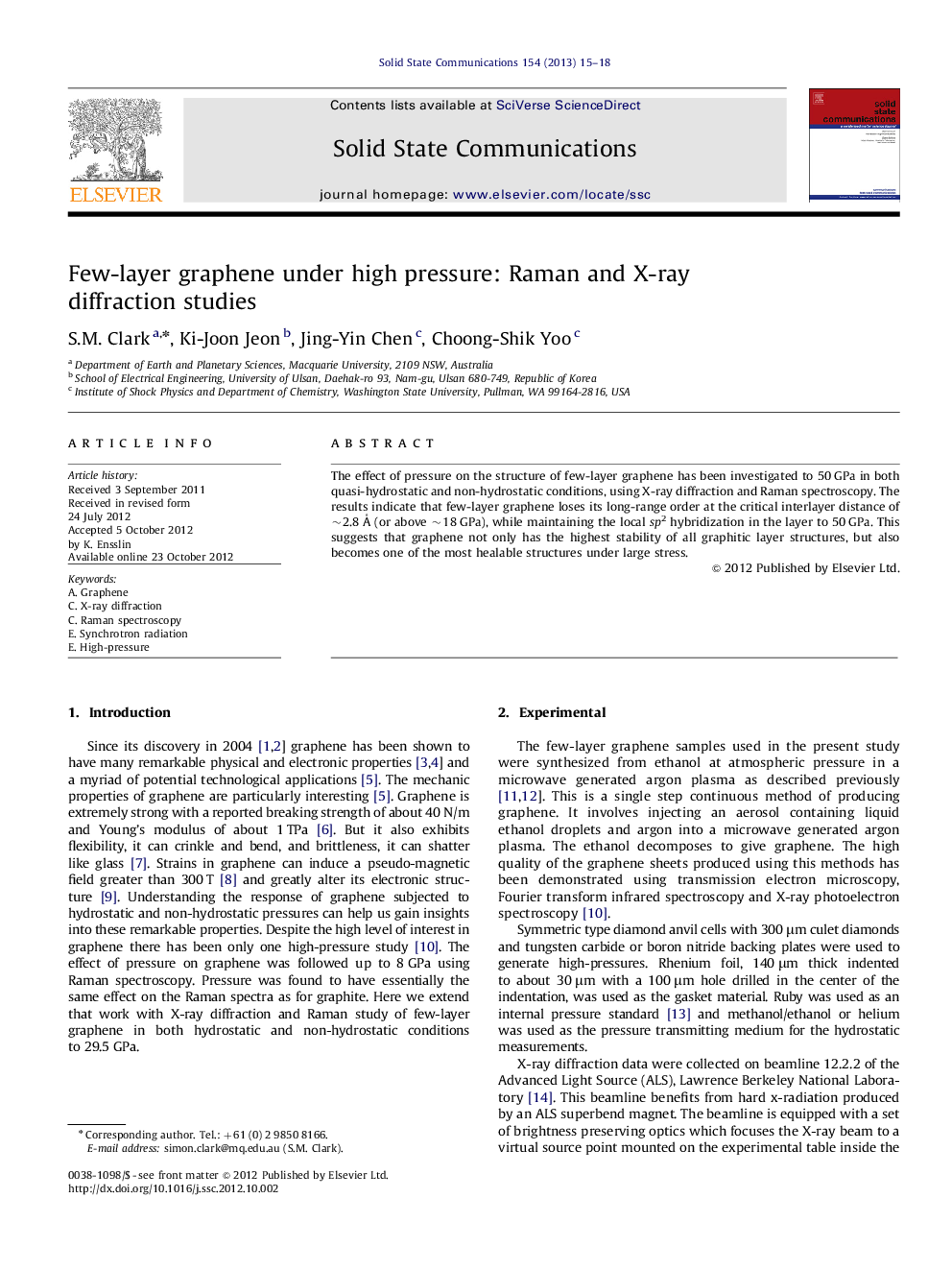| Article ID | Journal | Published Year | Pages | File Type |
|---|---|---|---|---|
| 1592547 | Solid State Communications | 2013 | 4 Pages |
The effect of pressure on the structure of few-layer graphene has been investigated to 50 GPa in both quasi-hydrostatic and non-hydrostatic conditions, using X-ray diffraction and Raman spectroscopy. The results indicate that few-layer graphene loses its long-range order at the critical interlayer distance of ∼2.8 Å (or above ∼18 GPa), while maintaining the local sp2 hybridization in the layer to 50 GPa. This suggests that graphene not only has the highest stability of all graphitic layer structures, but also becomes one of the most healable structures under large stress.
► Few-layer graphene is subjected to hydrostatic and non-hydrostatic pressure. ► X-ray and Raman scattering patterns were measured. ► The basal peak position was found to vary with pressure transmitting fluid. ► The diffraction pattern disappears at 18 GPa but the Raman pattern does not. ► It is the graphitic material with the highest stability and most healable structure.
